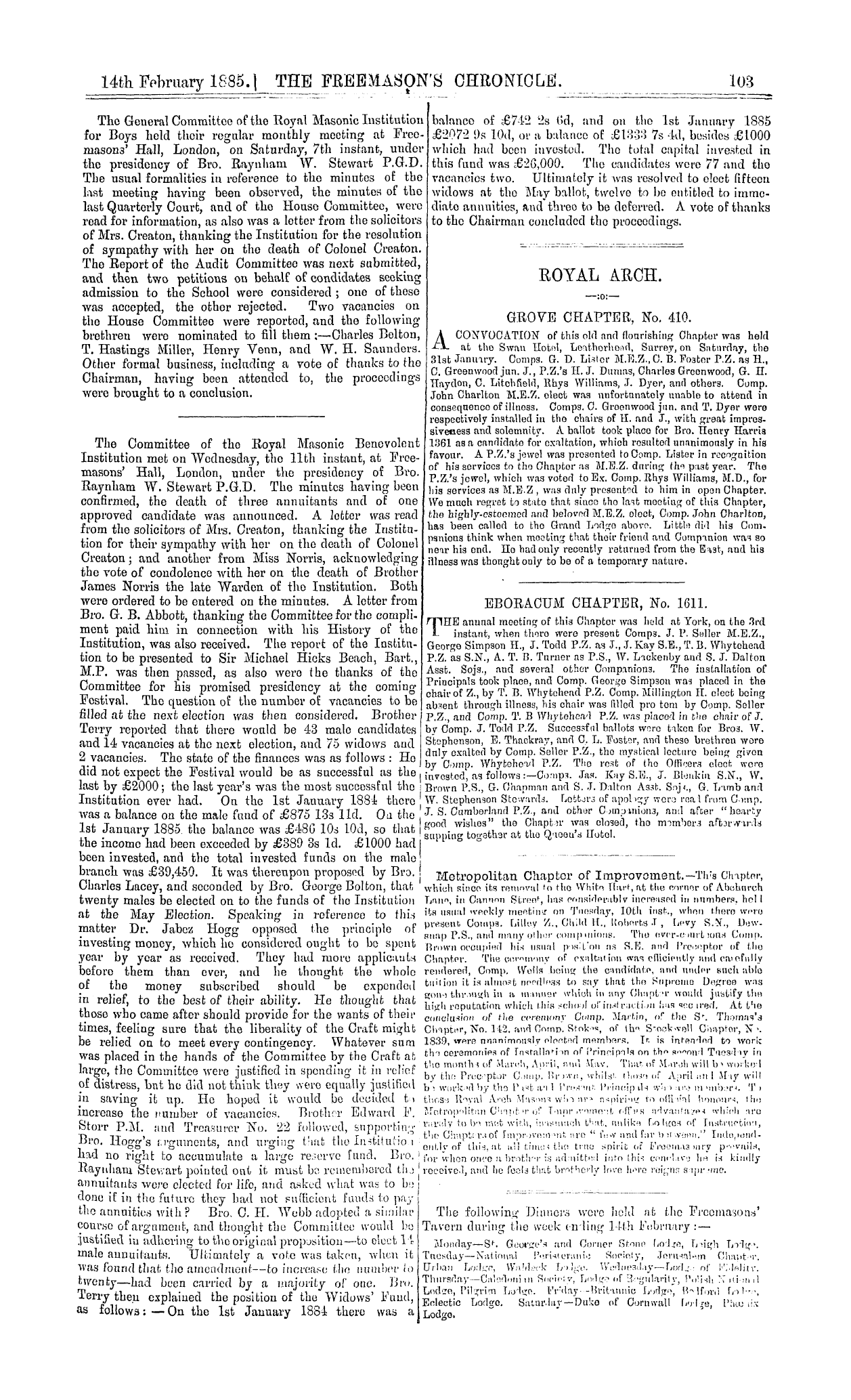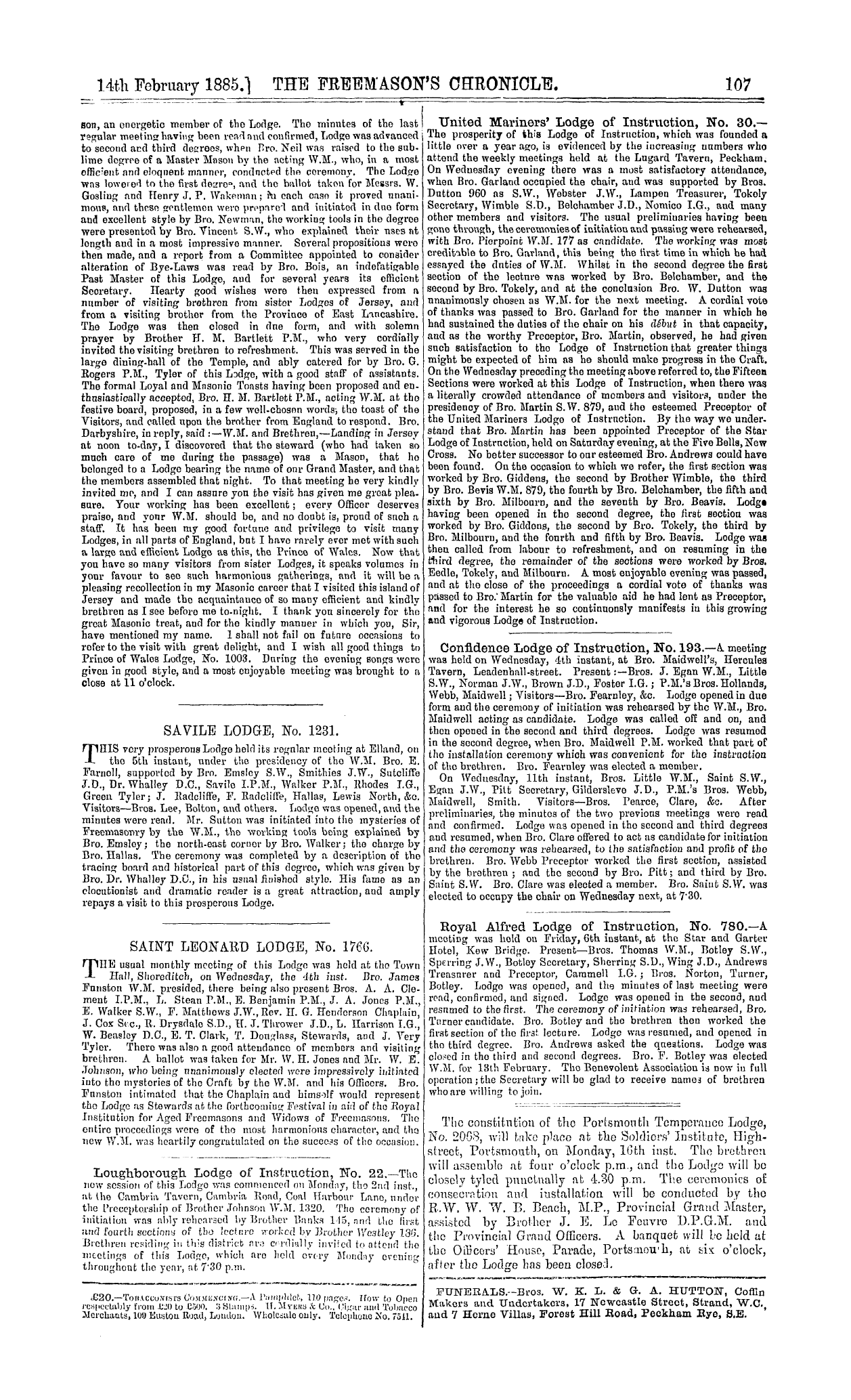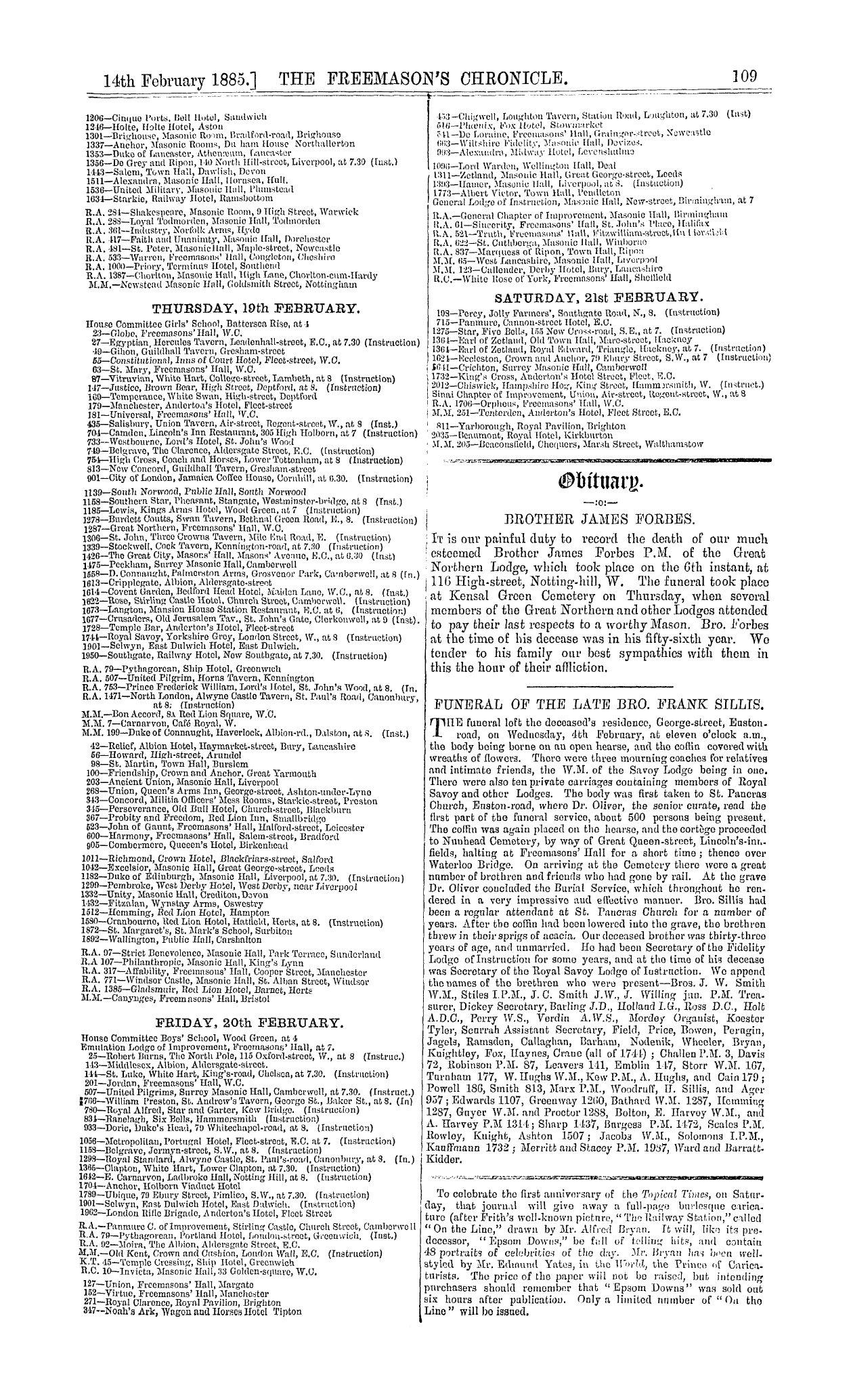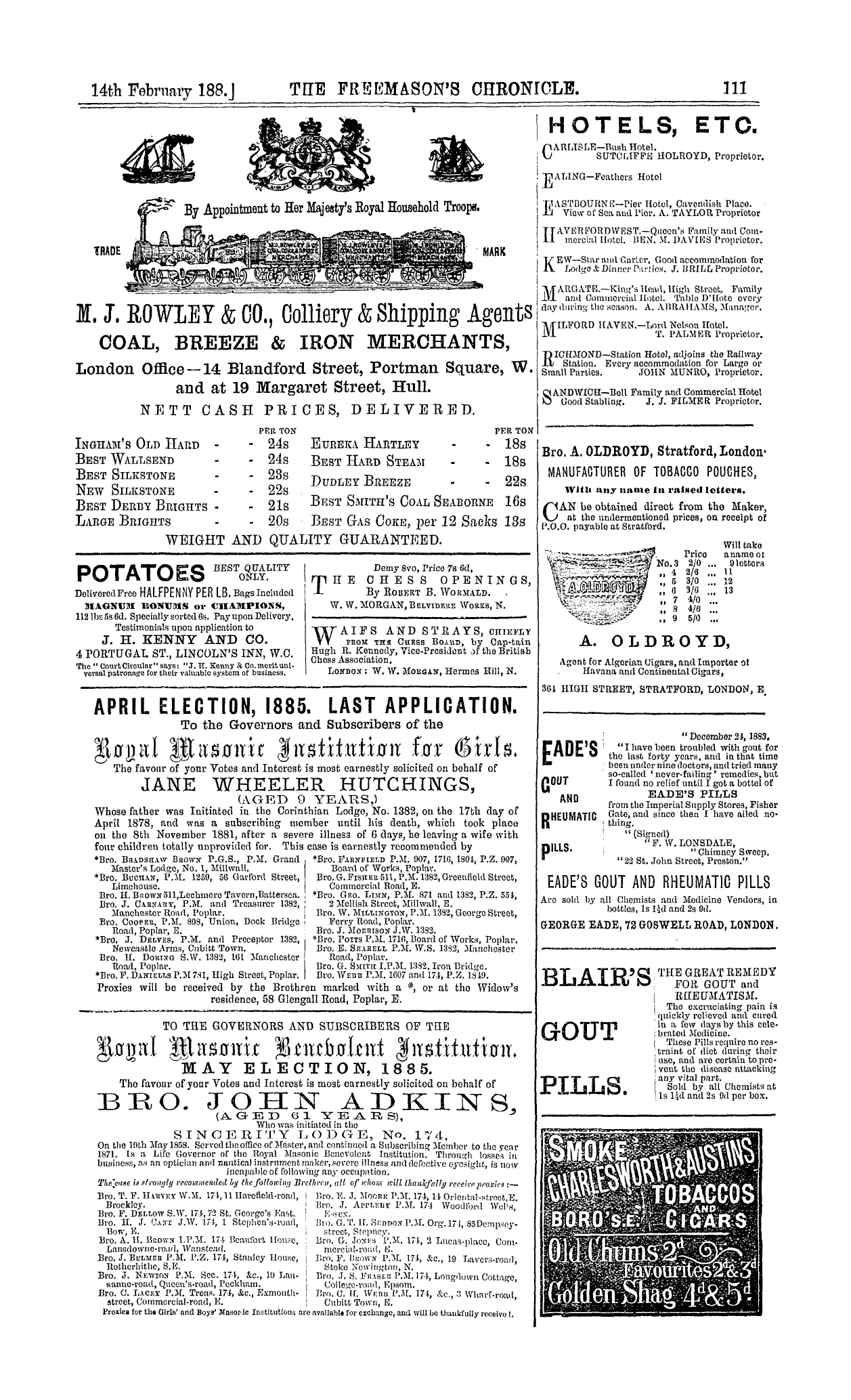-
Articles/Ads
Article AGE, WORTH, AND THE CRAFT. Page 1 of 2 Article AGE, WORTH, AND THE CRAFT. Page 1 of 2 →
Note: This text has been automatically extracted via Optical Character Recognition (OCR) software.
Age, Worth, And The Craft.
AGE , WORTH , AND THE CRAFT .
ANY ono reading the correspondence that has appeared of late in tho Masonic journals would imagine that the " great gooseberry " season had arrived before its time , or had outlasted tho period usually assigned to it . Tho writers referred to seem to enter into keen rivalry in their
attempts to produce living specimens of antique Freemasons—brethren who were quite juvenile at " three score years and ten , " who have been modest and silent as to their status in the Craft , but who have been suddenly
elevated into patriarchs . Perhaps it would be unkind to suppose that those brethren who manifest such an ardent zeal in searching out nonagenarians and centenarians are feeble imitators of tho notorious Baron Munchausen , but
they certainly have a sharp eye for the marvellous . No doubt they believe what they write . It may even be true that there are brethren still alive who were Freemasons when " George the Third was King . " Supposing this to
be so , cui lono ? Is the contest worth the labour ? Old age should be respected , but good deeds should be reveverenced . If increase of age were always synonymous with growth in virtue , the attempts made to canonize elders in
the Craft should bo welcomed . They should be put in the place of honour—made Masonic Gamaliels—at whoso feet younger members should kneel and learn of their wisdom and experience . All that seems to be done , however , is
simply to record the fact that Brother So and-So was made a Freemason in such a year , that he is of such an age , and therefore he is the oldest living member of the Craft . If
some of the writers would just search out and record a few facts relative to the Masonic career of their heroes , perhaps some useful lessons would be learned .
It would be profitable to know , for instance , what the venerable patriarchs have done for the Craft , whether during their long lives they continued to be subscribing
members . It would be interesting to learn what offices they have filled , what instruction they have afforded to their juniors , and what support they have given to the Charities . A case came before our notice of a brother who
claimed to have been initiated forty years ago , but who suffered a very long interregntim to elapse without taking the least interest in Freemasonry . This brother resumed
communication . Like the Prodigal of old , he returned to his parent , and he speedily rose to a post of honour . There were some who felt that the Craft had been rather
too lavish in its favours upon one who , whatever might be his position in social life , had for many years neglected tho claims of the Brotherhood . Not a few felt hurt at the implied slight inflicted upon merit and long service , and there
is reason to believe that much of the spirit of agitation that now prevails has arisen out of the manifest desire there is to worship the golden calf . There are other cases , no doubt , of a similar character , where new-born zeal and obtrusive generosity have outweighed life-long devotion .
Some brethren have been seized with a mania for founding Lodges and Chapters , and base their claims to honour upon the large number of members they have been instrumental in introducing ; . The credit lies more in the
motive than in the act . It is difficult to determine where patriotism and selfishness meet in such cases , but it is beyond dispute that the popularising of Freemasonry is the greatest of modern dangers . It is a cardinal creed of the Craft that no pressuro shall be brought to bear upon
Age, Worth, And The Craft.
cowans , that those who wish to enter the mystic circle shall come of their own free will and accord . Yet who does not know that this charter of our body has been
violated over and over again , and no protest made ? The temptation to some to make members has been too great for their prudence , they have regarded numbers before fitness . Upon their success claims , it is feared , have been
admitted , and contests for supremacy have been waged upon grounds which find no warrant in the genius of the Craft . The Order has grown , in numbers and increased in wealth beyond all precedent , and yet never was their
more urgent demand for help than now exists . It would be well for the brethren to consider how it is that so many are now seeking the aid of the various Charities , and why there is such an eager—almost painful—struggle for
increased subscriptions and donations . Is not the reason to be found in the fact that among the rush of members many have entered who should have been excluded ; or rather , who should never have been tempted to join ? This truth
will come home with greater force as the years roll on , and the evil will only cease when the Craft return to first principles . It may be that some will see in this reasoning a spirit of exclusiveness unworthy of the age in which we
live , a Cassandra-like croaking that regards only the dark side of the picture . That would be an easy method of getting rid of awkward facts for the moment , but they would return with increased force and would compel
attention . If Freemasonry were merely a benefit society , subject to rules as to age and subscriptions , then those who had succeeded in bringing in the most members would be entitled to honour . Membership in that case means capital
and partnership . It is a mutual confederation based upon co-operation and equal rights . The distinctions are such as naturally arise among all mixed bodies , and , as a rule , the intelligent few rule the many . Tho ceremonies are
comparatively feeble , they have no esoteric value . Such as they are , no doubt they serve a good purpose , but they are merely the outward trappings of an organisation that has its life in a provident combination for help in timo of
sickness and death . Freemasonry , on the other hand , is full of symbols , and its Charities are the national outcome of its spiritual teachings . No right to assistance is created
by membership , and it exists only in the exercise of that spirit of Charity which is the principal chaplet in tho crjwn of the Order .
Based upon divine truth , Freemasonry recognises neither age nor social standing unless associated with good deeds . It ia a pure Republic , and only misses its high purpose when the source of its inspiration is forgotten and . neglected .
Tho Order is rich in literature , and its origin is enveloped in a cloud of mystery , which to attempt to pierco demands the exercise of the highest intellect and the noblest genius . With so grand a patrimony , it seems almost ignoble to
talk about the oldest living Freemason as if beauty aud grace lie concealed in the shrivelled forms of automatons of the Craft , as if knowledge and progress were forwarded by their moribund professors , who bear tho name of the
body to which they nominally belong , but who have not earned the reward of tbe good steward who had been faithful to the few things committed to his charge . Were
tho true spirit of Freemasonry more cultivated , were more regard paid to fitness than to numbers , there would be more charity . The loud tongue would cease to chatter , and the wise find a hearing . The pettiness of discord would cease before the undisputed claims of real worth , and the
Note: This text has been automatically extracted via Optical Character Recognition (OCR) software.
Age, Worth, And The Craft.
AGE , WORTH , AND THE CRAFT .
ANY ono reading the correspondence that has appeared of late in tho Masonic journals would imagine that the " great gooseberry " season had arrived before its time , or had outlasted tho period usually assigned to it . Tho writers referred to seem to enter into keen rivalry in their
attempts to produce living specimens of antique Freemasons—brethren who were quite juvenile at " three score years and ten , " who have been modest and silent as to their status in the Craft , but who have been suddenly
elevated into patriarchs . Perhaps it would be unkind to suppose that those brethren who manifest such an ardent zeal in searching out nonagenarians and centenarians are feeble imitators of tho notorious Baron Munchausen , but
they certainly have a sharp eye for the marvellous . No doubt they believe what they write . It may even be true that there are brethren still alive who were Freemasons when " George the Third was King . " Supposing this to
be so , cui lono ? Is the contest worth the labour ? Old age should be respected , but good deeds should be reveverenced . If increase of age were always synonymous with growth in virtue , the attempts made to canonize elders in
the Craft should bo welcomed . They should be put in the place of honour—made Masonic Gamaliels—at whoso feet younger members should kneel and learn of their wisdom and experience . All that seems to be done , however , is
simply to record the fact that Brother So and-So was made a Freemason in such a year , that he is of such an age , and therefore he is the oldest living member of the Craft . If
some of the writers would just search out and record a few facts relative to the Masonic career of their heroes , perhaps some useful lessons would be learned .
It would be profitable to know , for instance , what the venerable patriarchs have done for the Craft , whether during their long lives they continued to be subscribing
members . It would be interesting to learn what offices they have filled , what instruction they have afforded to their juniors , and what support they have given to the Charities . A case came before our notice of a brother who
claimed to have been initiated forty years ago , but who suffered a very long interregntim to elapse without taking the least interest in Freemasonry . This brother resumed
communication . Like the Prodigal of old , he returned to his parent , and he speedily rose to a post of honour . There were some who felt that the Craft had been rather
too lavish in its favours upon one who , whatever might be his position in social life , had for many years neglected tho claims of the Brotherhood . Not a few felt hurt at the implied slight inflicted upon merit and long service , and there
is reason to believe that much of the spirit of agitation that now prevails has arisen out of the manifest desire there is to worship the golden calf . There are other cases , no doubt , of a similar character , where new-born zeal and obtrusive generosity have outweighed life-long devotion .
Some brethren have been seized with a mania for founding Lodges and Chapters , and base their claims to honour upon the large number of members they have been instrumental in introducing ; . The credit lies more in the
motive than in the act . It is difficult to determine where patriotism and selfishness meet in such cases , but it is beyond dispute that the popularising of Freemasonry is the greatest of modern dangers . It is a cardinal creed of the Craft that no pressuro shall be brought to bear upon
Age, Worth, And The Craft.
cowans , that those who wish to enter the mystic circle shall come of their own free will and accord . Yet who does not know that this charter of our body has been
violated over and over again , and no protest made ? The temptation to some to make members has been too great for their prudence , they have regarded numbers before fitness . Upon their success claims , it is feared , have been
admitted , and contests for supremacy have been waged upon grounds which find no warrant in the genius of the Craft . The Order has grown , in numbers and increased in wealth beyond all precedent , and yet never was their
more urgent demand for help than now exists . It would be well for the brethren to consider how it is that so many are now seeking the aid of the various Charities , and why there is such an eager—almost painful—struggle for
increased subscriptions and donations . Is not the reason to be found in the fact that among the rush of members many have entered who should have been excluded ; or rather , who should never have been tempted to join ? This truth
will come home with greater force as the years roll on , and the evil will only cease when the Craft return to first principles . It may be that some will see in this reasoning a spirit of exclusiveness unworthy of the age in which we
live , a Cassandra-like croaking that regards only the dark side of the picture . That would be an easy method of getting rid of awkward facts for the moment , but they would return with increased force and would compel
attention . If Freemasonry were merely a benefit society , subject to rules as to age and subscriptions , then those who had succeeded in bringing in the most members would be entitled to honour . Membership in that case means capital
and partnership . It is a mutual confederation based upon co-operation and equal rights . The distinctions are such as naturally arise among all mixed bodies , and , as a rule , the intelligent few rule the many . Tho ceremonies are
comparatively feeble , they have no esoteric value . Such as they are , no doubt they serve a good purpose , but they are merely the outward trappings of an organisation that has its life in a provident combination for help in timo of
sickness and death . Freemasonry , on the other hand , is full of symbols , and its Charities are the national outcome of its spiritual teachings . No right to assistance is created
by membership , and it exists only in the exercise of that spirit of Charity which is the principal chaplet in tho crjwn of the Order .
Based upon divine truth , Freemasonry recognises neither age nor social standing unless associated with good deeds . It ia a pure Republic , and only misses its high purpose when the source of its inspiration is forgotten and . neglected .
Tho Order is rich in literature , and its origin is enveloped in a cloud of mystery , which to attempt to pierco demands the exercise of the highest intellect and the noblest genius . With so grand a patrimony , it seems almost ignoble to
talk about the oldest living Freemason as if beauty aud grace lie concealed in the shrivelled forms of automatons of the Craft , as if knowledge and progress were forwarded by their moribund professors , who bear tho name of the
body to which they nominally belong , but who have not earned the reward of tbe good steward who had been faithful to the few things committed to his charge . Were
tho true spirit of Freemasonry more cultivated , were more regard paid to fitness than to numbers , there would be more charity . The loud tongue would cease to chatter , and the wise find a hearing . The pettiness of discord would cease before the undisputed claims of real worth , and the















